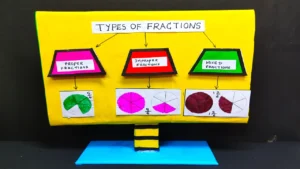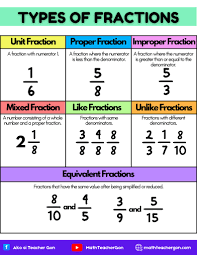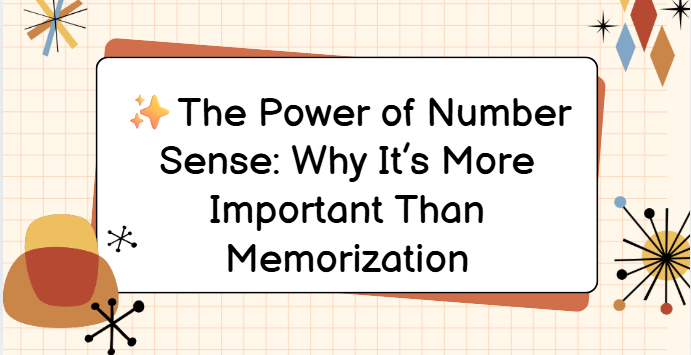
Mastering the Types of Fractions: The Ultimate Breakdown
Let’s Talk Types of Fractions: Understanding the Different Types Without the Headache
Let’s be real for a sec — fractions have this weird reputation for being the math monster under the bed. But here’s the truth: once you get the hang of the types of fraction, it’s honestly not that bad. In fact, it’s kinda fun (yep, I said it). So let’s break them down in a super chill way — no math anxiety allowed.

So, What Even Is a Fraction?
Think of a fraction like slicing a pizza. If you eat 3 out of 8 slices, you’ve gobbled up 3/8 of that delicious pie. Fractions just show how many parts of a whole you’ve got. The top number (numerator) = parts you have. The bottom one (denominator) = total parts.
The Main Types of Fractions (AKA The Big Players)
1. Proper Fractions
These are your basic good-behavior fractions. The top number is smaller than the bottom.
Example: 3/4, 5/6 — These are less than 1.
2. Improper Fractions
This is when things go wild. The top number is bigger (or equal) to the bottom one.
Example: 7/4, 9/8, 5/5 — These are equal to or more than 1.
3. Mixed Numbers (a.k.a Mixed Fractions)
These are like having your cake and eating it too — a whole number AND a fraction.
Example: 2 1/4, 3 3/5, 7 2/3
Now Let’s Talk Denominators
4. Like Fractions
These guys have the same bottom number. Super easy to work with.
Example: 2/5, 3/5, 1/5
5. Unlike Fractions
Here, the denominators are all over the place. You’ll need to get them on the same page (aka common denominators) before doing anything.
Example: 2/3, 5/6, 3/8
Fractions That Deserve a Shoutout
6. Equivalent Fractions
These might look different but they mean the same thing.
Example: 1/2 = 2/4 = 4/8 = 5/10
7. Decimal Fractions
You’ll see these in prices and measurements — fractions with 10s, 100s, etc., as the bottom number.
Example: 3/10 = 0.3, 25/100 = 0.25
8. Recurring Fractions
These turn into repeating decimals. The number just goes on forever in a pattern.
Example: 1/3 = 0.333…, 2/9 = 0.222… (That line over the number? It means it keeps going.)
9. Unit Fractions
These have a 1 on top. They’re like the intro-level fractions.
Example: 1/2, 1/5, 1/10
10. Complex Fractions
A fraction inside another fraction. Sounds wild but it’s just some math gymnastics.
Example: (1/2) / (3/4) = 2/3 after simplification

Bonus: What’s a Fractional Number?
This is a fancy name for any number that can be written as a fraction — proper, improper, mixed, you name it.
Where You’ll Actually Use These (Not Just in Class)
In the Kitchen
Recipes like “1 1/2 cups of flour” use mixed fractions all the time.
At Work (Yes, Even as an Adult)
Measurements, stock charts, interest rates — all packed with fractions.
Budgeting & Shopping
Think: “25% off” — that’s 1/4, friend. Fractions sneak into our wallets too.
How to Not Hate Fractions
- Picture them: pies, pizzas, chocolate bars — anything that gets divided helps.
- Practice: sounds boring, but it works.
- Convert between types to get comfy.
- Try math apps if you’re a techie.
Final Thoughts
So, there you have it — a full-blown breakdown of the types of fraction that won’t make your eyes glaze over. Whether it’s splitting a bill with friends or decoding discounts during sales, fractions are everywhere. The more you understand, the more control you’ve got over numbers in real life. And that’s kinda empowering, don’t you think?
FAQs
Q1: What’s the easiest type of fraction to start with?
A: Unit fractions. They’re super simple and a great starting point.
Q2: Can I turn a mixed number into an improper fraction?
A: Yup! Multiply the whole number by the denominator, add the numerator, and you’re good.
Q3: Why do I need a common denominator?
A: It’s the only way to add or subtract unlike fractions correctly.
Q4: What if my fraction has a repeating decimal?
A: That’s a recurring fraction. Just know the pattern repeats — and it’s totally normal!
Q5: Are decimals and fractions the same?
A: Not exactly, but they’re BFFs. You can turn one into the other with a little math magic.

Our instagram
Our website


